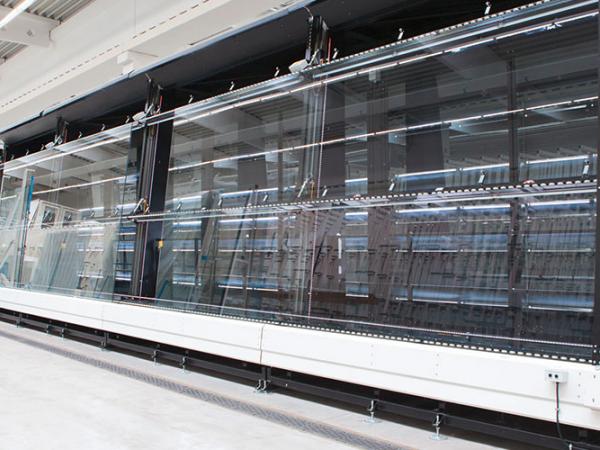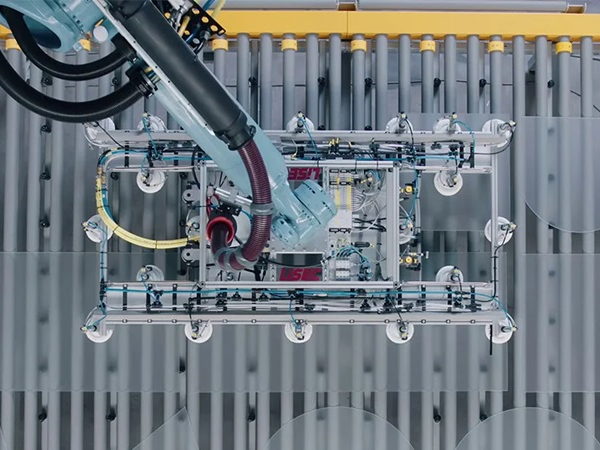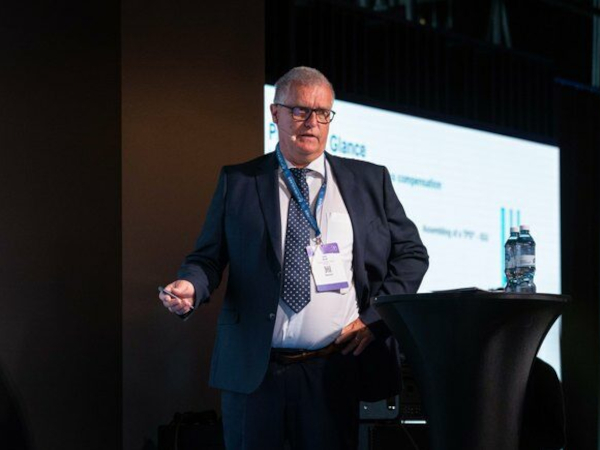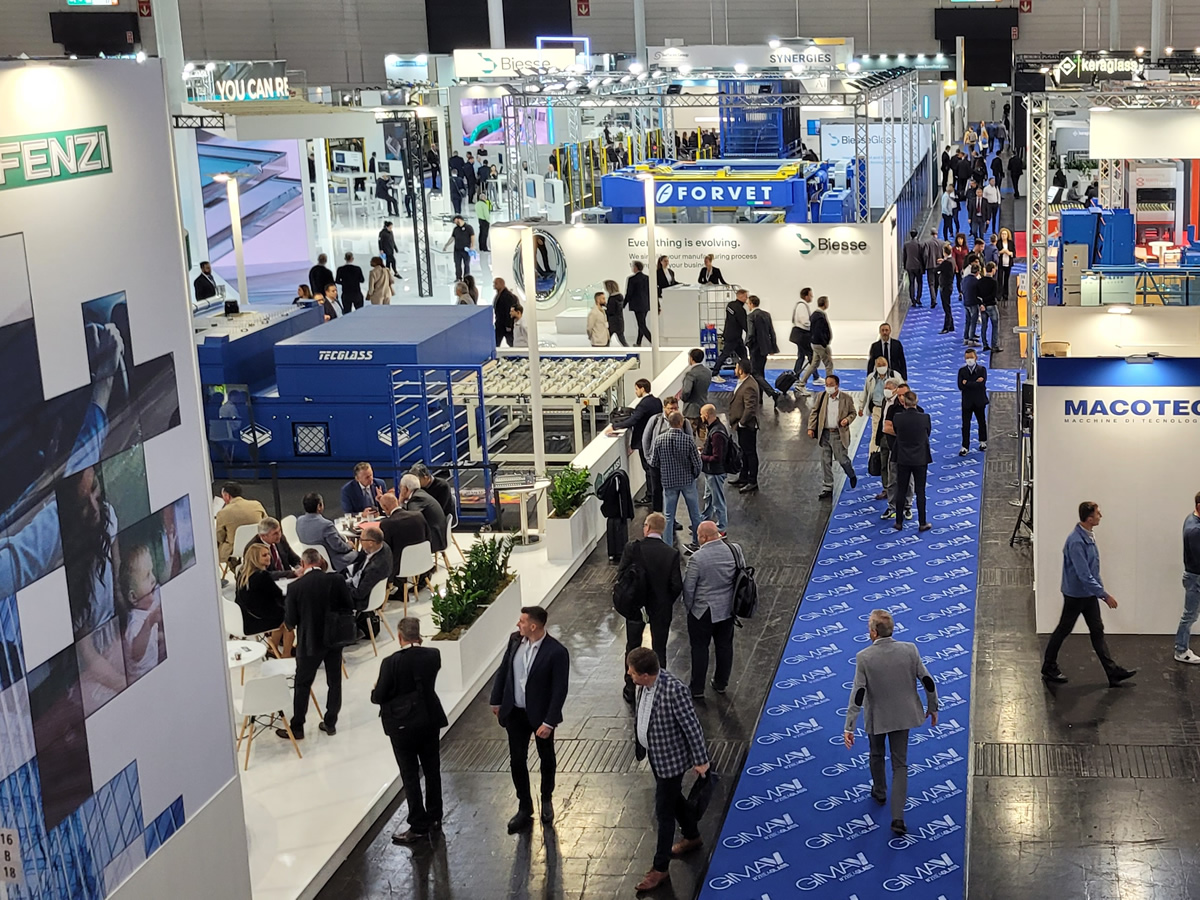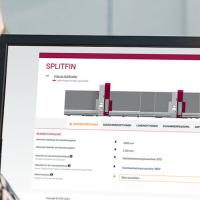According to studies, the world-wide per-capita demand for flat glass will on average increase by approximately six percent in the following years – the glass industry is booming.
This does not only apply to glasses, which are processed in standard windows and doors, but glass is also increasingly installed in (prestigious) objects as a structural or design element and this increasingly in XXL formats.
The possible applications of large-format insulating glass sheets are extensive: shopping malls, museums, office buildings, exhibition centers and convention centers.
Continuous large formats in the glass allow completely different designs in architecture on the one hand and, on the other hand, it is possible to create spaces and rooms with a never before experienced feeling of openness and spatial dimension due to unique light effects.
The production of such XXL products entails some challenges. Particularly delicate is the handling in the production, the logistics and the assembly.
LiSEC, the leading plant manufacturer for the flat glass industry, offers a sophisticated solution for the production of oversize insulating glass sheets.
Clemens Macarei, head of the business unit insulating glass production at LiSEC: “The last few months, we have intensively focused on solutions for the production of large-size insulating glasses.
Our approach is based on process reliability and an absolute top end quality. A stable process is a must for manufacturers of such special solutions made of glass - rejects are inconceivable in this league.“
Production lines for large-size insulating glass sheets by LiSEC are standardly designed for insulating glass elements of up to 350 kg per running meter.
Different variations (e.g. 16 meter length and 350 kg/running meter) are possible thanks to the modular construction in the steps of four meters and 2.5 meters.
Those lines are characterized by their ease of use due to self-learning formula/recipe settings, low assembly tolerances as a result of a high-quality machine engineering and a precise control technology and they are prepared for “tomorrow’s” challenges due to a high degree of creative freedom of the end products (steps, etc.).
Macarei continues: „The challenges for the construction of such a plant are to process a series of XXL sheets absolutely reliably as well as to produce standard insulating glass elements in an extremely economical way and this under the common production conditions: multi-shift operation, several types of spacers, also small batch sizes and in a short cycle time.“
In addition to the standard lines, LiSEC develops and manufactures special solutions for the highest requirements and demands in case of which the length of the sheets and the running meter weights are significant beyond the standard requirements.
Othmar Sailer, LiSEC CEO: „We have successfully installed and commissioned for example a production line for oversized formats at sedak GmbH & Co. KG in Gersthofen, Germany.
The requirements were particularly high in this case: the manufacturer processes elements of up to 15 meters with a running meter weight of up to 450 kg and the spacer is applied with an accuracy of 0.5 mm. The accuracy of the sheet positioning to each other here amounts to 1 mm.
In order to meet those requirements we developed an own concept which is applied for in several patents.“
The upscaling of an existing insulating glass line does not work in this league. The same applies to the required logistics instruments.
In this case, we developed a fully automatic withdrawal of the XXL insulating glass elements, which ensures that it is not required to handle the elements manually until the final strength of the secondary sealant.
Sailer: “This success was only possible due to the combination of our experience in the own flat glass processing plant and an absolute focus on the customer.”
Interview with Hannes Spiss, facade engineer at Arup
Glasses are becoming larger and larger – is there any limit?
Spiss: „I do not assume that there is no ultimate limit for oversize sheets and if there should be one, then we are currently far from reaching this limit. We are rather talking about individual factors, which limit the maximum size of glass for the individual construction project.
For example, years ago it was unthinkable that there will ever be glasses, which are wider than 3.21 meters and longer than 6.00 meters. Today, the maximum width of glass in the global market amounts to 3.6 meters and the maximum length amounts up to 18 meters.
However, in most cases there are commercial decisions, which specify the maximum glass size for an individual project. For some builders it is inacceptable to only have one or two suppliers for oversize sheets.
Others in turn are afraid of the risks and costs of a replacement glazing. However, in rare cases you will encounter architects and builders who defy the current limitations and who are, with great financial expenses, cooperating in the development of still larger sheets.
This is why it will only be a matter of time until we will have to redefine oversize sheets.
What is a feasible standard (length, height, construction)?
Spiss: In terms of production, the feasible standard is currently mainly limited by the sizes of raw glass. For most of the float glass factories, the production of oversize formats is only possible with an additional effort.
The processing of oversizes is increasingly becoming the standard because many processing machines are also adapted to the new trends. In case of thick glass structure, it is also the optical and visual quality, which plays a limiting role.
In case of structures with increasing layers of individual glasses, there is a higher risk of surface contaminations or optical imperfections.“
What are common structures?
Spiss: „A majority of those large-format sheets is used for displays/shop windows and reception areas of commercial buildings. Many sheets are made of monolithic laminated glass because those building elements are currently often subject to reduced building physics requirements.
Large-format glasses have only been constructed as insulating glass sheets for a very short time. In those cases, the outer sheet mostly consists of a multi-layer laminated glass element, which counteracts the static requirements and a “thinner” inner laminated glass sheet.
Which types of spacers can be processed and which can you recommend?
Spiss: „The edge bond of large-format sheets requires an increased attention because expected requirements cannot be compared to the normal/standard sizes.
The thermal change in length between the metal spacer and the glass sheet may for example amount to several millimeters. If you additionally consider the increased number of plug connection in case of metal spacers, then this constitutes a major challenge for the manufacturers of insulating glass because the glasses have to comply with relevant standards and quality requirements.
The use of continuous, flexible spacers seems quite reasonable in this case. But the individual edge bond design should nevertheless be examined carefully in order to achieve a high-quality and durable solution.
Which trends do you observe in terms of large-format insulating glass units?
Spiss: „Due to the increasing building physics requirements more and more large-format sheets will be produced in form of insulating glass. An increasing environmental awareness might still encourage this trend. Free-form or cylindrically formed sheets will also play a central role in modern architecture.
Which barriers are there in the application of large-format sheets?
Spiss: The challenges in terms of the application of large-format sheets are versatile. The trick is to identify all relevant intersections between architecture, statics, building physics, legal requirements, production, transport and installation and to link them logically.
This is why in those projects several people from the above mentioned divisions are always cooperating to find a common solution in order to enable the application of large-format sheets.
Needless to say that every member of the team has certain expectations and wants to implement them; a fact that sometimes leads to unnecessary hurdles. But usually everybody is interested in a successful implementation.
About LiSEC: best in glass processing
LiSEC based in Hausmening/Amstetten is a globally active group, which has been offering innovative individual and overall solutions in the field of processing and refining of flat glass for more than 50 years.
LiSEC’s service portfolio comprises machines, automation solutions and services. In 2015, the group with its approximately 1,300 employees and more than 20 locations generated an aggregate turnover of about 230 million Euros at an export rate of more than 90 percent.
LiSEC develops and produces glass cutting and sorting systems, individual components and entire production lines for the production of insulating and laminated glass as well as machines for the processing of glass edges and tempering systems.
With a reliable technology and intelligent automation solutions, LiSEC sets standards in terms of quality and technology and makes a substantial contribution to the success of its customers.


